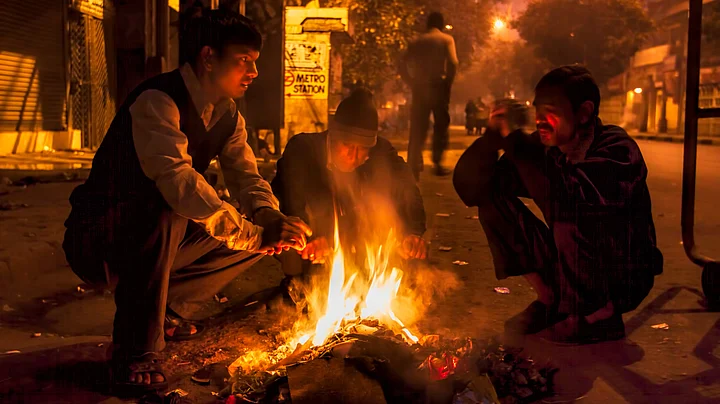A cold wave has plagued North-India with below average temperatures gripping the Indo-Gangetic plain.
However, North-India received a brief relief on the 29 and 30 December from the cold as predicted by the IMD. Temperatures over the Indo-Gangetic plains are expected to settle at 7°C.
With only a short respite, North India will greet 2023 much the same as the end of 2022--with a biting chill. From 1 January 2023, a new cold wave is predicted to begin.
While we might feel that this winter is colder given the colwaves, experts say this will be a relatively warmer winter with spurts of chilling cold waves.
But what is a cold wave? A region is considered to experience cold wave conditions when the temperature persists at below 4°C or is more than 4.5°C below normal according to the Indian Meteorological Department (IMD).
Contrary to common perception, global warming doesn't mean we will see more and more heat waves and cold waves would reduce. Global warming induced climate change means we are moving towards a world of extremes. We will see more of all extreme weather events and the same goes for cold waves too.
Cold Wave: Brought To You by Climate Change
North and North-East India have been experiencing a warmer than usual winter them during the period of December-February according to the predictions released by the Indian Meteorological Department (IMD).
Meanwhile in an odd switch, South and Central India are experiencing a surprising temperature drop this season.
The warmer than usual winter conditions alongside the currently ongoing bitterly cold temperatures have been caused due to the affects of climate change on various atmospheric phenomenon such as La Nina, Western Disturbances and the cold wave.
La Nina is an atmospheric and oceanic phenomenon that takes place over the pacific ocean. During La Nina, the surface temperatures across the eastern equatorial and central pacific ocean are much lower.
The La Nina conditions usually bring a colder and wetter-than-normal winter.
However due to climate change, this year that won't be the case with a colder-than-normal winter for the south and a warmer-than-normal for northwest and northeast India.
What Can We Expect?
From 1 January 2023, temperatures across North India are expected to drop. Punjab, Haryana, Rajasthan, Chandigarh, and Delhi are predicted to experience cold wave and cold day conditions.
Cold day conditions are when the daytime temperature drop below 10°C or is more than 4.5°C below normal as declared by the IMD.
The temperatures in Punjab, Haryana, northern Rajasthan, Chandigarh and Delhi are expected to remain somewhere between 0 and 4°C in the same span of days.
Alongside the bitter cold, these regions are likely to experience a drop in visibility in the coming days. A dense fog is expected to blanket North-India starting 1 January.
On the other hand, Jammu and Kashmir, Himachal Pradesh and Leh will be experiencing snowfall due to an ongoing active Western Disturbance (WD) that has affected whether patterns according to the IMD.
Also due to Western Disturbance, Punjab is expected to see rainfall sometime in the upcoming days.
(Our on-ground climate journalism needs your insights, ideas, and financial support - as we cover the biggest crisis of our times. Become a Q-Insider so we can bring more such stories to light.)
(At The Quint, we question everything. Play an active role in shaping our journalism by becoming a member today.)
